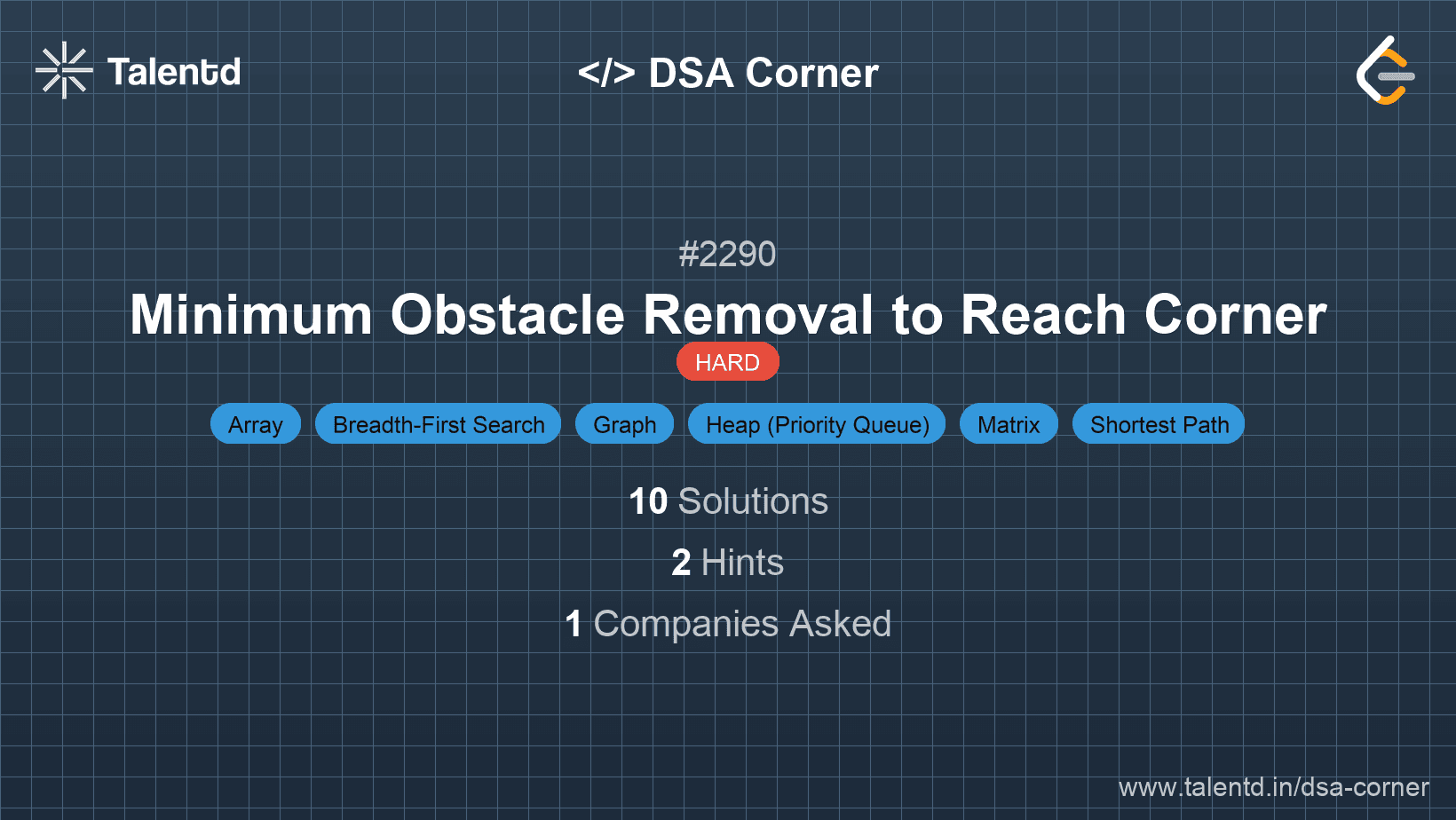
Sponsored
Sponsored
This approach uses a priority queue (or deque) to implement a modified Dijkstra's algorithm to explore the grid in a way similar to the 0-1 BFS (Breadth-First Search). Here, obstacles count as 'cost', and we try to find the minimum 'cost' path from the top-left corner to the bottom-right corner. We assign a priority based on the number of obstacles removed.
Time Complexity: O(m * n)
Space Complexity: O(m * n)
1using System;
2using System.Collections.Generic;
3
4public class MinimumObstacles {
5 public int MinimumObstaclesInGrid(int[][] grid) {
6 int m = grid.Length, n = grid[0].Length;
7 int[][] dist = new int[m][];
8 for (int i = 0; i < m; i++) {
9 dist[i] = new int[n];
10 Array.Fill(dist[i], int.MaxValue);
11 }
12
13 var deque = new LinkedList<(int, int)>();
14 dist[0][0] = 0;
15 deque.AddFirst((0, 0));
16
17 int[][] directions = { new[] {0, 1}, new[] {1, 0}, new[] {0, -1}, new[] {-1, 0} };
18
19 while (deque.Count > 0) {
20 var current = deque.First.Value;
21 deque.RemoveFirst();
22 int x = current.Item1, y = current.Item2;
23
24 foreach (var dir in directions) {
25 int nx = x + dir[0], ny = y + dir[1];
26 if (nx >= 0 && nx < m && ny >= 0 && ny < n) {
27 int cost = dist[x][y] + grid[nx][ny];
28 if (cost < dist[nx][ny]) {
29 dist[nx][ny] = cost;
30 if (grid[nx][ny] == 0) {
31 deque.AddFirst((nx, ny));
32 } else {
33 deque.AddLast((nx, ny));
34 }
35 }
36 }
37 }
38 }
39
40 return dist[m - 1][n - 1];
41 }
42}This implementation in C# uses a LinkedList to serve as a deque for executing a variation of Dijkstra's algorithm tailored for the obstacle-removal requirement. As each element is explored for potential paths, spatially efficient management of explored cells ensures that the fewest obstacles possible are removed across the grid contextually.
In this approach, we utilize dynamic programming combined with a monotonic queue to solve the problem of reaching the bottom-right corner with minimal obstacle removal. This alternative method involves leveraging the properties of dynamic arrays to store and update minimal removal costs dynamically while using a queue to maintain an effective processing order based on current state values.
Time Complexity: O(m * n)
Space Complexity: O(m * n)
1import java.
This Java solution implements a dynamic programming approach using Java's LinkedList as a deque, allowing it to maintain the necessary order of processing based on current grid dynamics efficiently and effectively transitioning from obstacle-heavy paths to minimally costed options.